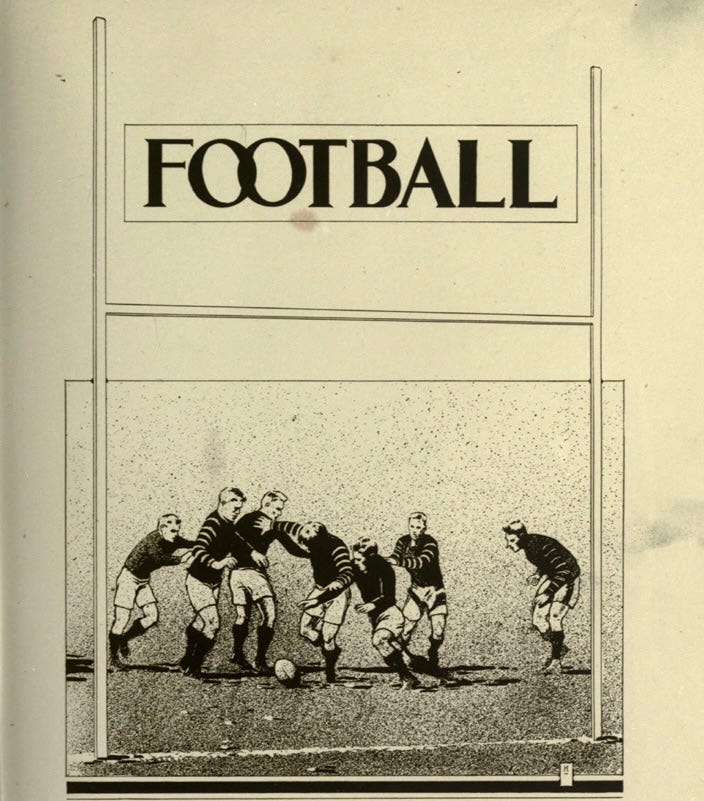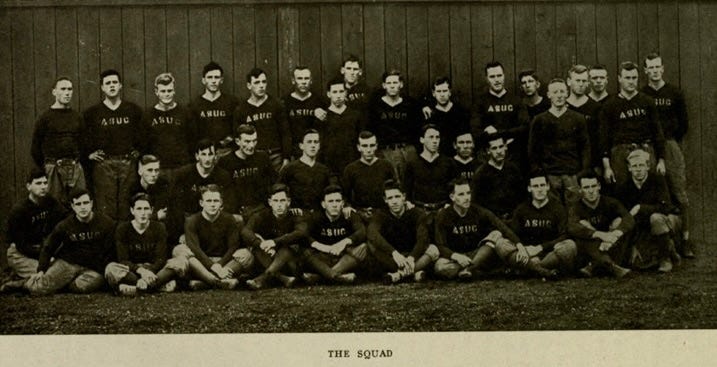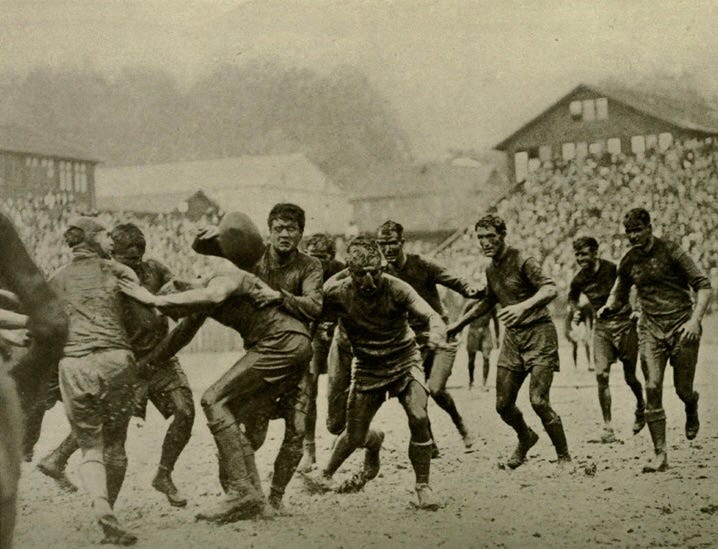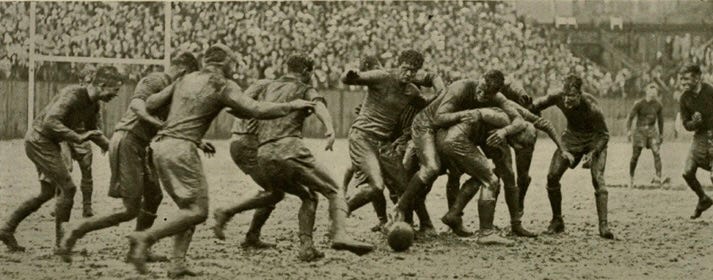Today’s Tidbit… What's Wrong With This Picture?
Look at the picture below of 36 men posing in a stadium. They wear athletic gear, with most of them wearing jerseys that display "ASUC" across the chest. If I told you the picture appeared in the 1914 yearbook of one of America's largest universities, you might think the image shows that school's football team. However, you would be wrong or right depending on what you mean by "football."
ASUC stands for the Associated Students of the University of California. The organization continues to this day, so you can correctly assume the team represented Cal, and they did so during the 1912 season. The tricky bit is that the picture does not show Cal's American football team of 1912. Instead, it shows their rugby football team of 1912. (They wore football gear -without pads- in practice and some games.)

American football experienced a crisis at the close of 1905 when the number of deaths and injuries led numerous schools to consider dropping the sport. While a reconstituted rules committee substantially revised the rules for 1906, some schools had had enough and dropped football. Columbia in the East, Northwestern in the Midwest, and Cal and Stanford on the Pacific Coast were the most prominent droppers.
Northwestern brought football back in 1908, while Columbia did so in 1915. We'll cover Cal and Stanford's return to the gridiron later in the story, which focuses on their playing rugby in the interim.
Returning to playing rugby had been suggested by some in the college sports world since football headed down the mass and momentum route that led to dangerous play, so it wasn't a surprise when Cal, Stanford, and most colleges and high schools in California switched to rugby in 1906.
By 1912, rugby was in full swing in the Golden State, as most freshmen trying out for Cal's team had played rugby in high school, while the varsity team's high school playing experience was mixed.
Cal's opponents in 1912 included several Bay Area athletic clubs, St. Mary's, and a series with a touring Australian team, which won two out of three from Cal after the Aussies lost to a stronger Stanford team.
Like today, the final and most important contest of the year was the Big Game against Stanford, which they played at California Field. Although both teams had hoped for fair weather, it rained in the days leading up to the game and dumped buckets on the field two hours before the whistle.
Both teams struggled to move the ball. They literally had trouble moving the ball out of the scrum so someone could pick it up, pass it, and run with it. Much of the game was a sloppy, muddy mess, made less satisfying by the 3-3 score at match end.
Cal played one more season of rugby. Too many rugby losses to Stanford, the limited number of available rugby opponents, and the success of the forward pass in reducing football's violence prompted Cal's return to football in 1915. Stanford had an Army-sponsored SATC team in 1918 and returned to varsity competition in 1919.
Several underclassmen from Cal’s 1912 rugby team transitioned to playing football in 1915. Andy Smith took over the helm the following year and soon revitalized Cal football; his early 1920s Wonder Teams remain legendary today.
Football Archaeology is reader-supported. Click here to buy one of my books or otherwise support the site.






